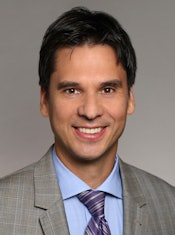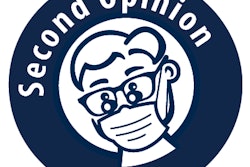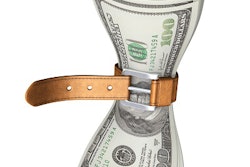
A March 2016 brief from the ADA Health Policy Institute estimated the cost to states of introducing nonemergency dental benefits for adults enrolled in Medicaid. Some states would add benefits for a slight a percentage increase of their total Medicaid spending, according to the brief.
 Marko Vujicic, PhD, chief economist and vice president of the ADA Health Policy Institute. Image courtesy of the ADA.
Marko Vujicic, PhD, chief economist and vice president of the ADA Health Policy Institute. Image courtesy of the ADA.While the U.S. requires dental care coverage for children younger than age 21 who are enrolled in Medicaid, adult coverage is not required. As of September 2015, 22 states provided no or emergency-only dental benefits for adults. The authors of the brief suggest this lack of coverage may contribute to rising rates of emergency department visits for dental problems.
The institute, therefore, set out to estimate how much expanding dental Medicaid coverage for adults would cost the remaining 22 states that provide limited or no coverage.
"Adding a relatively extensive adult dental benefit to a state's Medicaid program may not be as costly as state policymakers believe and may result in cost savings in other areas of the state's budget," Marko Vujicic, PhD, chief economist and vice president of the ADA Health Policy Institute, said in an interview with DrBicuspid.com. "In our brief, we suggest that adding an adult dental benefit may lower other medical care costs, especially among diabetics, or enhance employability prospects among Medicaid-enrolled adults."
Modeling estimated costs
The Health Policy Institute researchers created a model in Microsoft Excel that simulates three possible cost estimates for the 22 states that provide no or limited adult dental Medicaid coverage. The model uses customizable assumptions to help predict possible scenarios.
| Assumptions for expanded Medicaid adult dental benefit scenarios | ||
| Scenario 1 | Scenario 2 | Scenario 3 |
| Percentage of Medicaid adults with dental visit set as the average across states that currently provide an extensive adult dental benefit | Percentage of Medicaid adults with dental visit set as a percent of privately insured adults with a dental visit in each state | |
| Annual dental spending per Medicaid enrollee set as average across states that currently provide an extensive adult dental benefit | ||
| Medicaid reimbursement rate for adult dental care set as 60% of typical private dental benefits plan charges | Medicaid reimbursement rate for adult dental care set relative to private benefit plan rates for child dental care services | |
The three resulting scenarios showed that it would cost about $1.5 billion per year for all states to provide expanded adult dental Medicaid benefits. That combined sum is just a small percentage of total Medicaid spending, and actual predicted state increases vary from $3.3 million to $195 million more per year depending on the state and scenario.
"For a range of between 0.4% to 2% of total state Medicaid spending, states can provide oral healthcare services that are important in promoting overall health, decreasing unnecessary and costly use of emergency departments for dental conditions, and improving other aspects of low-income adults' lives, including the ability to find employment," Vujicic said. "However, we recognize that adding adult dental benefits in Medicaid programs is unlikely to be budget neutral."
| Estimated increase in state Medicaid spending to provide adult dental coverage | |||
| Scenario 1 | Scenario 2 | Scenario 3 | |
| Greatest expenditure increase by $ amount | $102.8 million in Florida | $91.1 million in Texas | $194.9 million in Texas |
| Least expenditure increase by $ amount | $4.6 million in Utah | $3.3 million in Utah | $7.9 million in Utah |
| Greatest expenditure increase by % | 1.9% in Nevada | 2.1% in West Virginia | 4.8% in Delaware |
| Least expenditure increase by % | 0.7% in Missouri and Utah | 0.4% in Missouri | 1.0% in Missouri |
Out of the three possible scenarios, the researchers noted that the third is both the most costly and most unrealistic. Vujicic believes the second one is the most probable.
"Scenario 2 assumes reimbursement rates for adult dental care, as a proportion of typical private rates, will be the same as for children's dental care," he said. "It also assumes, in our view, more realistic dental care utilization rates."
Possible effects on dentists
When expanding dental coverage, there is also the concern of having enough dental providers to deliver care. The policy brief cited research that suggests there is "sufficient capacity" to provide enough care for adults enrolled in Medicaid should they get dental coverage.
While Vujicic said that if any of the states expanded coverage, dentists practicing in those states can expect more demand, he also cautioned that how much demand depends on how well the new benefits are implemented and promoted.
"Dentists who participate in the Medicaid program should expect to see a significant increase in the number of adults with Medicaid calling them and scheduling appointments," he said. "But it is important to understand the coverage does not equal access. Unless Medicaid beneficiaries know about the new dental benefit and have easy-to-use navigation tools to find participating dentists, the increase in volume could be muted."



















